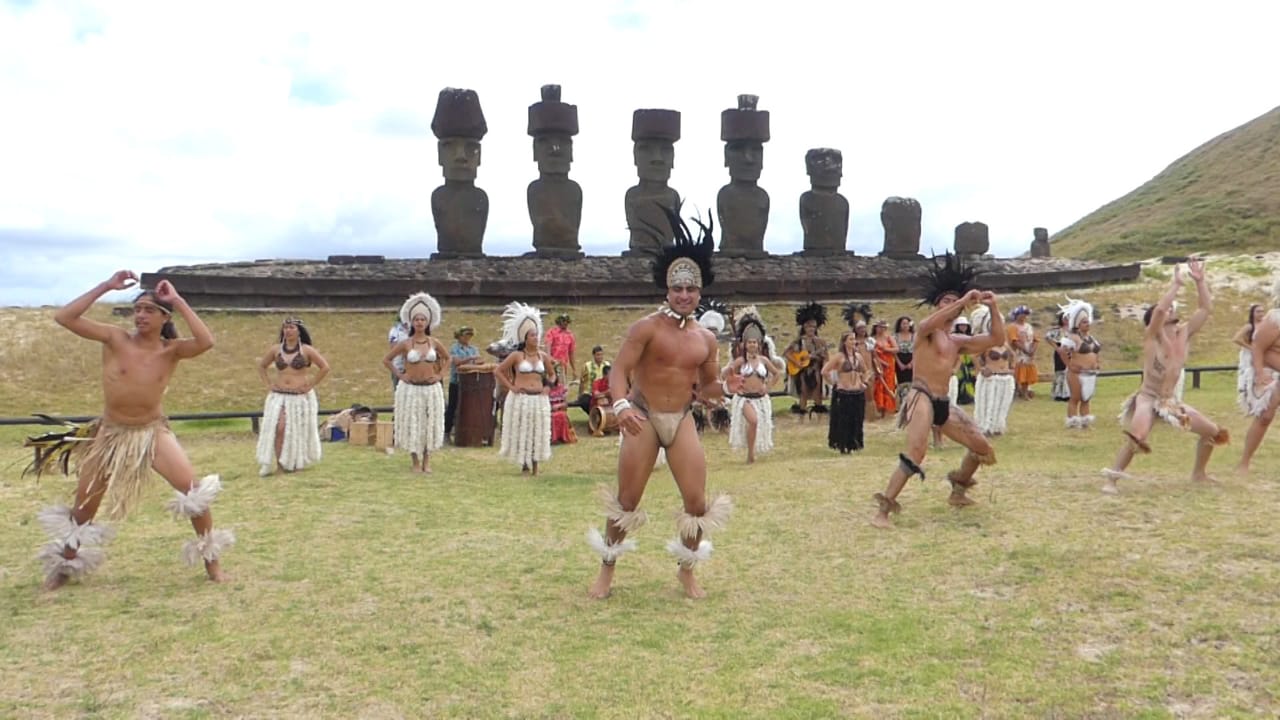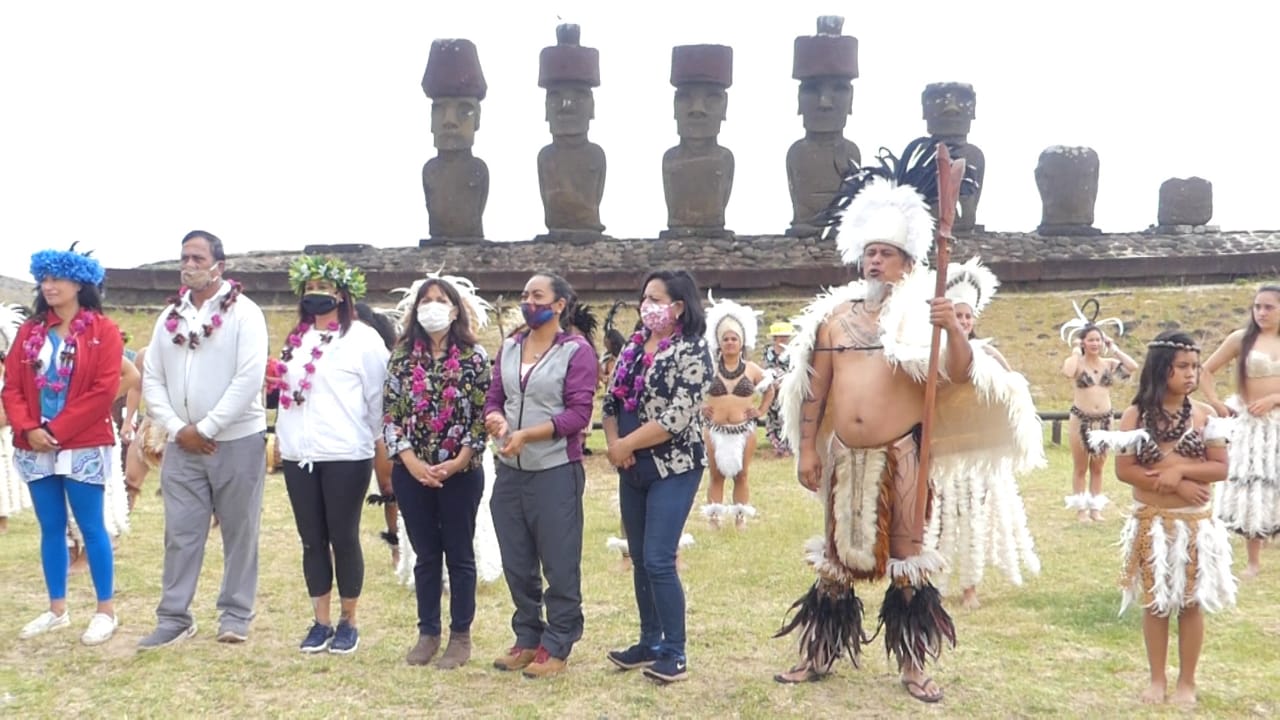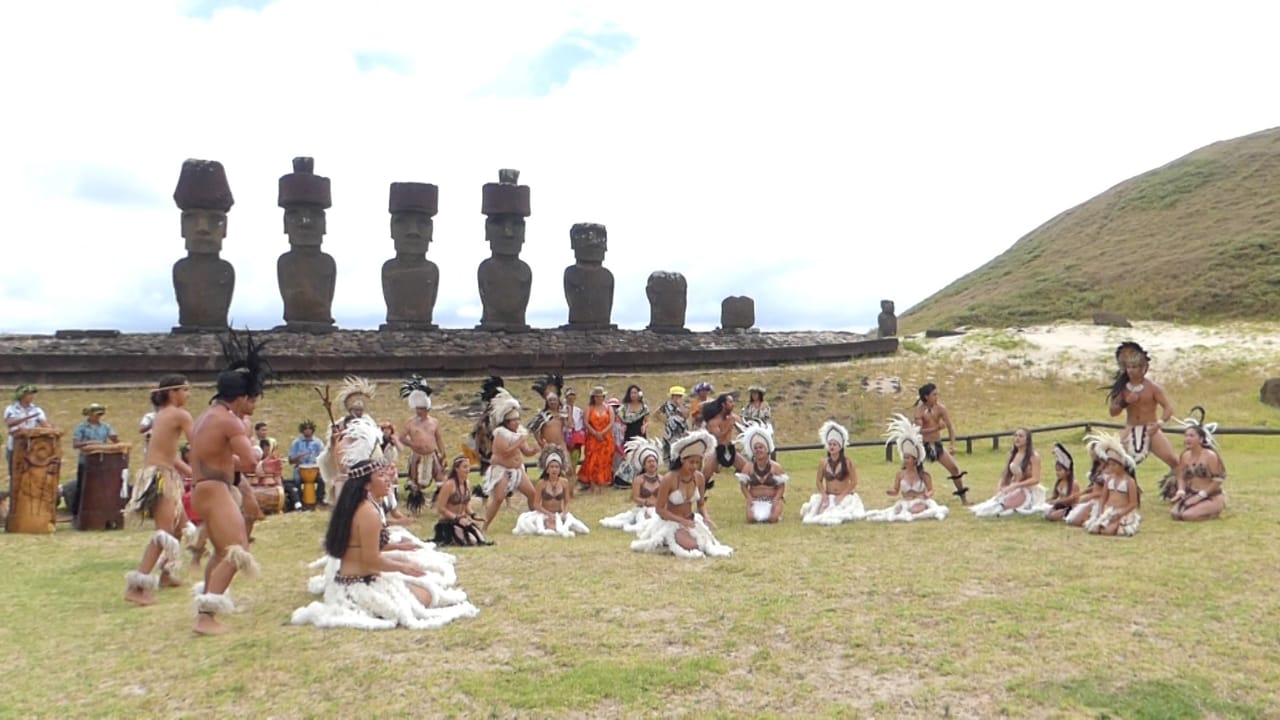



A fundamental step to take over the management was to recognize the Indigenous worldview of Rapa Nui People and their understanding of nature, as well as their relationship with their cultural heritage into the management of the protected area. This enable the consideration of place-specific needs and opportunities. This process implied:
- The recovery of the Indigenous language, for creating documents and materials for the management of the National Park.
- The consideration of the ancestral organization system based on clans, through the organization Honui that participates in the decision making process in the National Park.
- A survey of the sacred places.
- A prospective recovery of the name Rapa Nui to name the island instead of Easter Island (Isla de Pascua).
- The reconnection with Rapa Nui traditional knowledge, festivities and cultural expressions.
- The development of a public use plan in which the community traditional uses dialogue with the tourist and heritage uses
- Recognition and promotion of ancestral use of medicinal plants based on the generation of projects and programmes for the enhancenment and recovery of the natural component and ancestral medicine of Rapa Nui.
- A plan for the return of Tupuna (ancestors) and cultural elements that are outside of the island.
- Initiative by the Rapa Nui community to recover and value their ancestral culture.
- Endorsement from the State institutions in charge of heritage protection: the Ministry of Culture and Arts, and the Chilean National Forestry Service (CONAF), Ministry of Agriculture.
(1) Importance of the integration of local understandings and Indigenous language in the official education system.
(2) Need to change the touristic view over the island, and instead inviting the visitors to learn from a living culture and its ancestral history, and to be part of a community during their stay, getting involved with cultural activities, and not just come to see a Moai.
(3) Need of cooperation alignment between the Culture and Education sectors.
(4) Identification of new areas in need of urgent protection.
(5) Adaptation of the statutes of the Indigenous Community to our idiosyncrasy as a People.